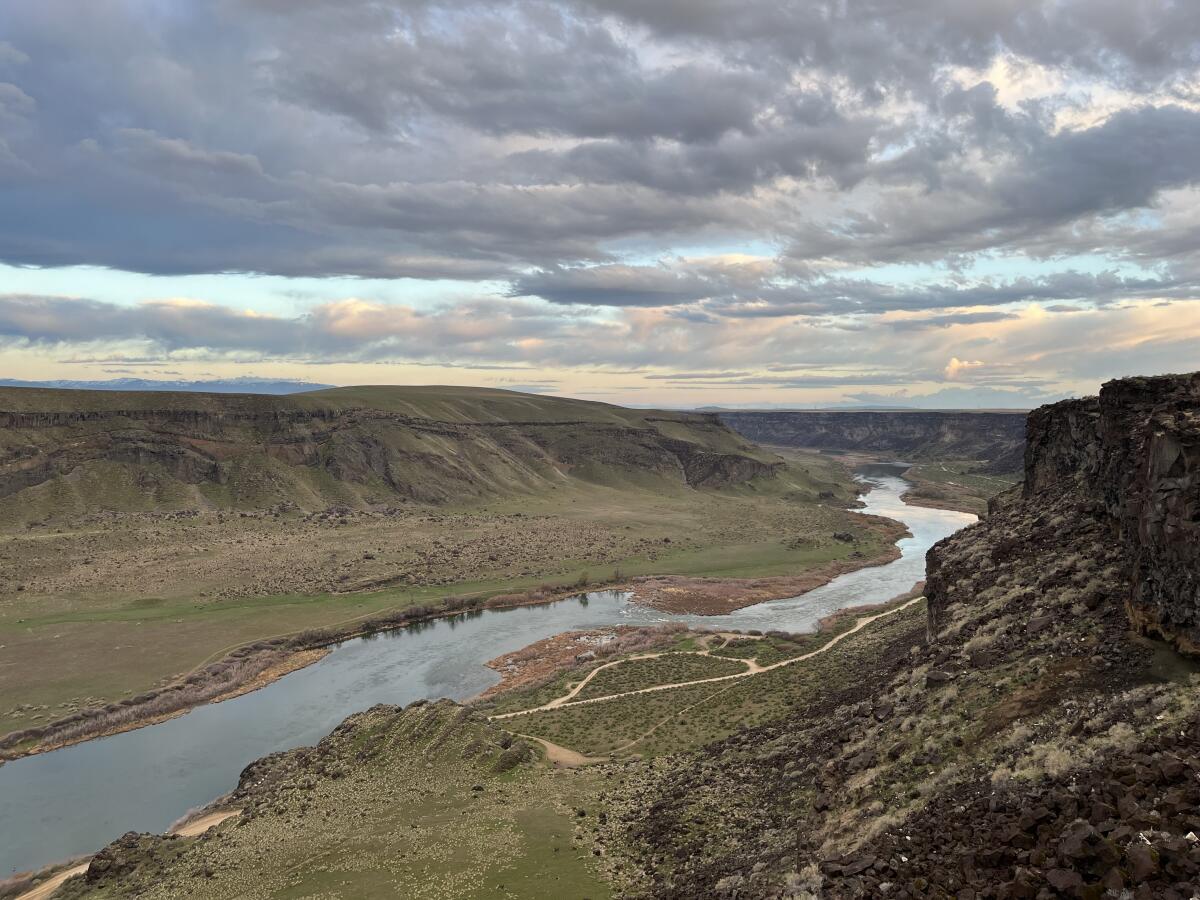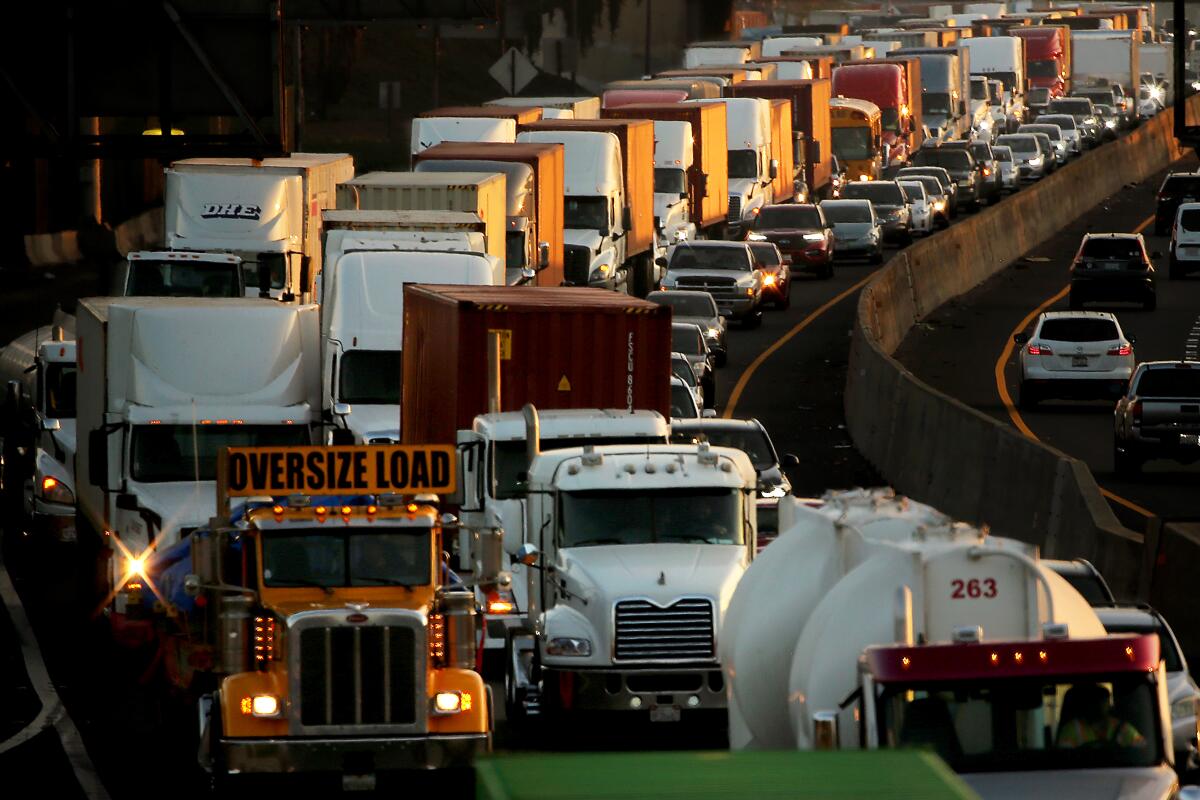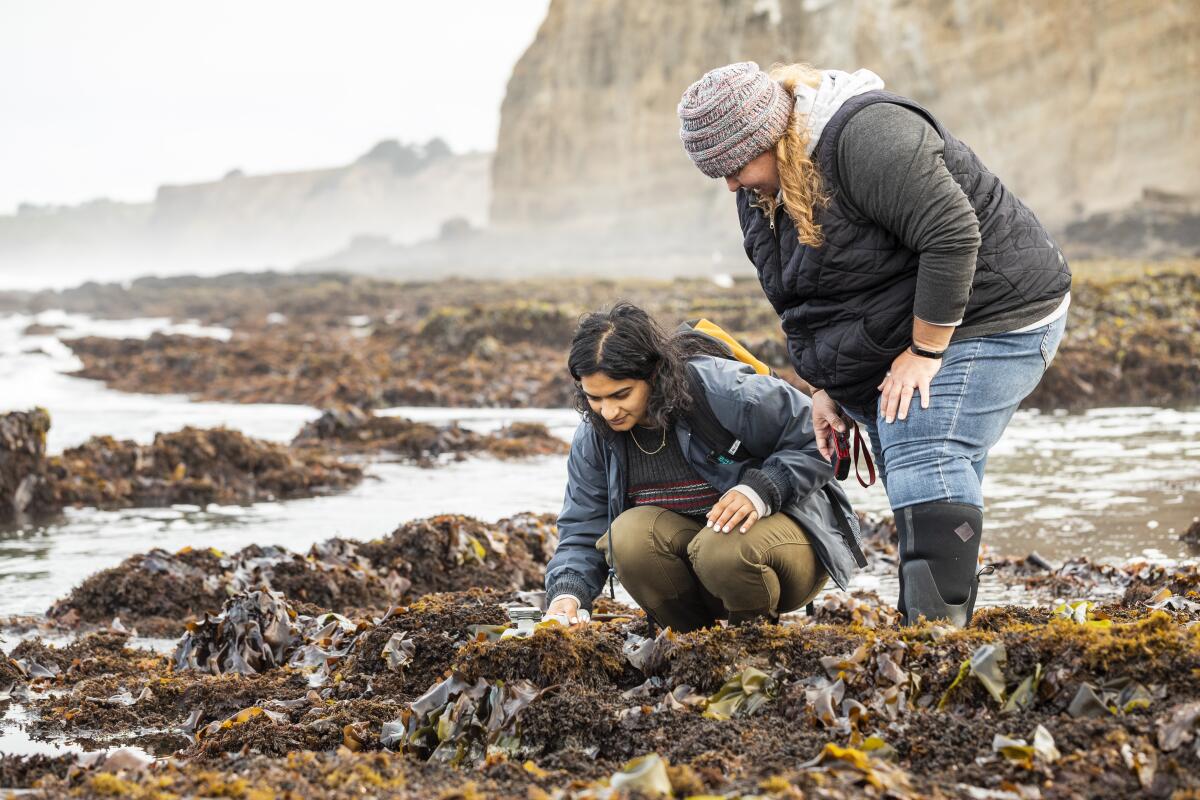Boiling Point: To Idaho and beyond!

- Share via
This story was originally published in Boiling Point, a newsletter about climate change and the environment. Sign up here to get it in your inbox.
After 10 days in Idaho, I’m grateful to be back home.
But man, did I learn and see some amazing stuff in the Gem State.
Despite its conservative reputation, Idaho has a history of environmental action. A memorial outside the state Capitol celebrates the conservation legacy of Gov. Cecil Andrus, who helped protect tens of millions of acres in Idaho and across the country.
And as I strolled along the Boise River flowing free and clear through downtown Boise — and watched the sun rise over a nearby conservation area — it wasn’t hard to see that Idahoans love pristine, wild places where they can fish, hunt and relax.
It also wasn’t hard to see that Idaho is grappling with many of the same questions as California.
Are hydropower dams a valuable source of climate-friendly energy or fish-killing monstrosities that should be torn down? What makes a landscape a good spot for wind turbines versus a place that should be permanently protected? Is mining a destructive industry that we ought to relegate to the dustbin of history or a crucial part of our clean energy future?
I’ll get into those questions — at least with regard to Idaho — in Part 4 of Repowering the West, our ongoing series. (Stay tuned for Part 3 soon, all about southern Nevada.) In the coming weeks, I’ll share behind-the-scenes stories from my recent road trip in Boiling Point. We’re back to twice-a-week publication for now, so look for another newsletter this Thursday.
I also spent a few days at the Society of Environmental Journalists’ annual conference, held this year in Boise. Again, more details to come. But for now, feel free to watch a panel discussion I moderated, dealing with the tension between renewable energy and conservation in the West. One of the panelists was Tracy Stone-Manning, director of the U.S. Bureau of Land Management.
Stone-Manning’s boss, Interior Secretary Deb Haaland, also spoke at the conference. She touted the Biden administration’s work to get solar and wind farms built on public lands while also defending her department’s approval of oil and gas projects.
“We’re not going to turn the faucet off and say we’re not drilling anymore,” Haaland insisted during a Q&A session, as reported by the Associated Press’ Matthew Daly. “We’re not going to say we’re not going to use gas and oil. That’s not reality.”
On that note, let’s get to the news. Here’s what’s happening around the West:
POLITICAL CLIMATE

All cargo trucks entering California seaports and rail yards will need to be zero-emission by 2035 — and that’s just the tip of the iceberg under new rules approved by state officials. The rules also dictate that all medium- and heavy-duty trucks sold in California must be electric or otherwise zero-emission starting in 2036, The Times’ Tony Briscoe reports. Smog-belching old trains will need to be retired, too. In addition to helping address the climate crisis, the regulations should reduce unhealthful air pollution, which despite decades of progress is still worse in Southern California and the Central Valley than anywhere else in the country, as Briscoe notes in a separate story. The Biden administration, meanwhile, is gearing up to require huge cuts in climate pollution from power plants nationwide, per the Washington Post’s Timothy Puko.
Some experts see a clear legal path for U.S. cities to keep pushing all-electric homes, even after a court decision rejecting Berkeley’s first-in-the-nation gas ban. Details here from Canary Media’s Maria Gallucci, who writes that Berkeley officials used a different legal strategy than most of the cities that have moved to ditch fossil natural gas — although it was the same strategy that Los Angeles used. The court ruling certainly hasn’t stopped New York officials from developing plans for a statewide ban on gas in new homes and other buildings, as the Washington Post’s Anna Phillips reports. If you’re interested in switching from gas heating and/or cooking to climate-friendly electric appliances in your home, my colleague Jon Healey has a how-to piece breaking down the costs, rebates and tax credits — and how to figure out if you currently have gas or electric.
Two U.S. senators — Nevada Democrat Catherine Cortez Masto and Idaho Republican Jim Risch — have introduced a bill that would bolster companies looking to extract lithium and other minerals necessary for the clean energy transition, by helping them get around a court ruling that could otherwise limit their ability to mine on federal lands. The Associated Press’ Scott Sonner has the story, which serves as a reminder of the mining industry’s continued political might. In other D.C. drama, Inside Climate News’ Marianne Lavelle has a fascinating story about the nation’s largest clean energy lobbying group allying itself with oil and gas companies to push for permitting reform that would benefit fossil fuels as well as renewables.
CALIFORNIA WATER

The Los Angeles Aqueduct was already breached once this year during heavy floods — and the worst could be yet to come as melting snow courses down from the Sierra Nevada. The Times’ Louis Sahagún wrote about the L.A. Department of Water and Power’s frantic efforts to shore up the aqueduct, which carries drinking water from the Eastern Sierra. (It hasn’t been a great few months for the DWP, which is also facing hard questions from its own board about a failure to repair dangerous power poles.) Sahagún also wrote about how California’s epic mountain snowpack might affect wildlife big and small. The short version: Many mammals and mallards are probably in luck, but sage grouse and migratory birds, not so much.
L.A.’s largest wastewater treatment plant will probably be slapped with a record $21.7-million penalty, with regulators saying operational breakdowns and poor practices continued long after a 2021 sewage spill into Santa Monica Bay. Here’s the story from my colleague Robert J. Lopez, who writes that the plant “reported more than 150 violations of its environmental permit, including failure to comply with ocean monitoring and reporting requirements after torrents of raw sewage flooded the facility.” In other water pollution news, a federal judge granted final approval to a $50-million settlement with Amplify Energy after the company’s undersea pipeline leaked thousands of gallons of crude oil into the Pacific Ocean in 2021.
There’s more drama at Central Basin Municipal Water District, which now has the ACLU on its case for ejecting a member of the public who wanted to talk about criminal charges against the district’s general manager at a public meeting. The embattled water agency serves almost 2 million residents in southeast Los Angeles, as The Times’ Dorany Pineda notes in her story. There’s another controversy playing out at nearby West Basin Municipal Water District, where longtime board member Gloria Gray was recently elected to the City Council in Inglewood — one of the cities that buy water from West Basin. Some water district officials see her dual roles as a conflict of interest, Jason Henry reports for the Los Angeles Daily News. Gray also serves on the board of the powerful Metropolitan Water District of Southern California and was previously its chair.
WATER IN THE WEST
The long-term outlook on the Colorado River is still dire — but in the short term, it’s less grim than it was a few months ago. CNN’s Ella Nilsen reports that the U.S. Bureau of Reclamation plans to release an additional 2.5 million acre-feet of water from Lake Powell to Lake Mead this year, for a total of 9.5 million. Already, federal officials carried out a first-ever springtime flood experiment last week, releasing three days of high flows from Glen Canyon Dam in an effort to improve environmental conditions in the Grand Canyon and rebuild beaches for Colorado River rafters, the Arizona Republic’s Shaun McKinnon reports.
San Diego officials are trying to create a few hundred of acres of marshland to protect the shoreline against rising seas and suck up carbon — and they’re facing fierce pushback from golfers and tennis players who don’t want to give up even small amounts of land. Here’s the story from David Garrick at the San Diego-Union Tribune, which illustrates the huge potential for climate-resilient natural spaces — and the difficulty of reimagining our built infrastructure. And if you’re looking for a more stress-free story about restored wetlands, check out this piece about the Bay Area’s Dutch Slough, which stores carbon dioxide “at a higher rate than nearly all other sites studied around the world,” the San Francisco Chronicle’s Tara Duggan writes.
“I want to show that we are capable of doing the hard things that are necessary for us to be able to achieve this change, whether it’s running 200 marathons or solving the global water crisis.” My colleague Ian James wrote an inspiring story about Mina Guli, a 52-year-old Australian activist who over the last year has run marathons in 32 countries — including in California — to call attention to global water issues, including drought, floods and pollution. “Climate change is water change,” Guli told James. “We just need to do things better and smarter. We need to wake up to the challenge that we’ve got in front of us.”
AROUND THE WEST

Conservationists and a Northern California tribe want President Biden to protect Molok Luyuk — a remarkably biodiverse ridge once eyed for wind energy development — by expanding Berryessa Snow Mountain National Monument. “You hear the botanists freaking out about this place? It’s a mecca for them,” one activist told the Sacramento Bee’s Ari Plachta, who writes that Molok Luyuk is home to 7% of the state’s native flora. If you care about wildlife, you’ll also want to look out for the results of the City Nature Challenge, which took place over the weekend. In California and around the world, urban wildlife watchers used the iNaturalist app to log sightings of lizards, squirrels, wildflowers and more. The Times’ Sean Greene explained how the “World Series of urban nature” got started, and made some cool data visualizations charting past results.
“These are the last crumbs of a much larger ecosystem.” A developer is preparing to start construction of a luxury housing development in the Verdugo Mountains in Los Angeles — based on a nearly 20-year-old city approval and environmental report. Critics say the development site is not only valuable wildlife habitat, it’s also a dangerous fire zone, my colleague Hayley Smith reports. In other wildfire news, David Sherfinski at the Thomson Reuters Foundation has an important story about fire dispatchers, who say they suffer from much of the same trauma as their firefighting colleagues in the field and are working overtime to make ends meet. The Times’ Noah Bierman, meanwhile, wrote about a new competition — targeted at millionaires and billionaires — that aims to encourage the development of technologies to detect and stop wildfires.
Has documentarian Ken Burns done enough to center Native American perspectives in his films about the West, including the upcoming “The American Buffalo”? High Country News journalist Nick Martin pressed Burns on that question in this recent interview, and the result is a nuanced, thought-provoking conversation. “I’ve spent nearly 50 years making films about the U.S., but I also make films about the lowercase ‘us,’ ” Burns said. “Whatever exigencies of the present moment, whatever pressures and sort of movements of the present moment come, they’re leaning against an open door.”
ONE MORE THING

I live not far from downtown Culver City, and I’ve occasionally been annoyed, driving through the area, by how long the red lights last — and how quickly the few lanes dedicated to cars can back up, slowing down traffic. So it’s easy for me to understand why city officials voted last week to add back car lanes, undoing a pilot project that created protected bike lanes and led to more people cycling, riding the bus and scooting through downtown. Details here from my colleague Ryan Fonseca.
The City Council vote followed vocal displeasure from drivers. But the straightforward reality is that confronting the climate crisis — and making our air more breathable — will require redesigning streets and neighborhoods to be less conducive to cars and more conducive to other ways of getting around. The Culver City pilot program was accomplishing that. And now it’s kaput.
At the same time, climate-friendly transit projects still deserve public scrutiny.
Exhibit A: an aerial gondola that would carry fans from L.A.’s Union Station to Dodger Stadium, which has been backed by much-maligned former Dodgers owner Frank McCourt. The Times’ Bill Shaikin wrote about the proposed gondola, trying to determine whether McCourt is angling for further development of the stadium parking lots after it’s built. Fonseca, meanwhile, pointed to research questioning how much difference the gondola would make in reducing traffic and climate pollution.
Personally, I’m a fan of parking at Union Station and taking the free bus to the ballpark.
We’ll be back in your inbox on Thursday. To view this newsletter in your Web browser, click here. And for more climate and environment news, follow @Sammy_Roth on Twitter.
Toward a more sustainable California
Get Boiling Point, our newsletter exploring climate change, energy and the environment, and become part of the conversation — and the solution.
You may occasionally receive promotional content from the Los Angeles Times.






